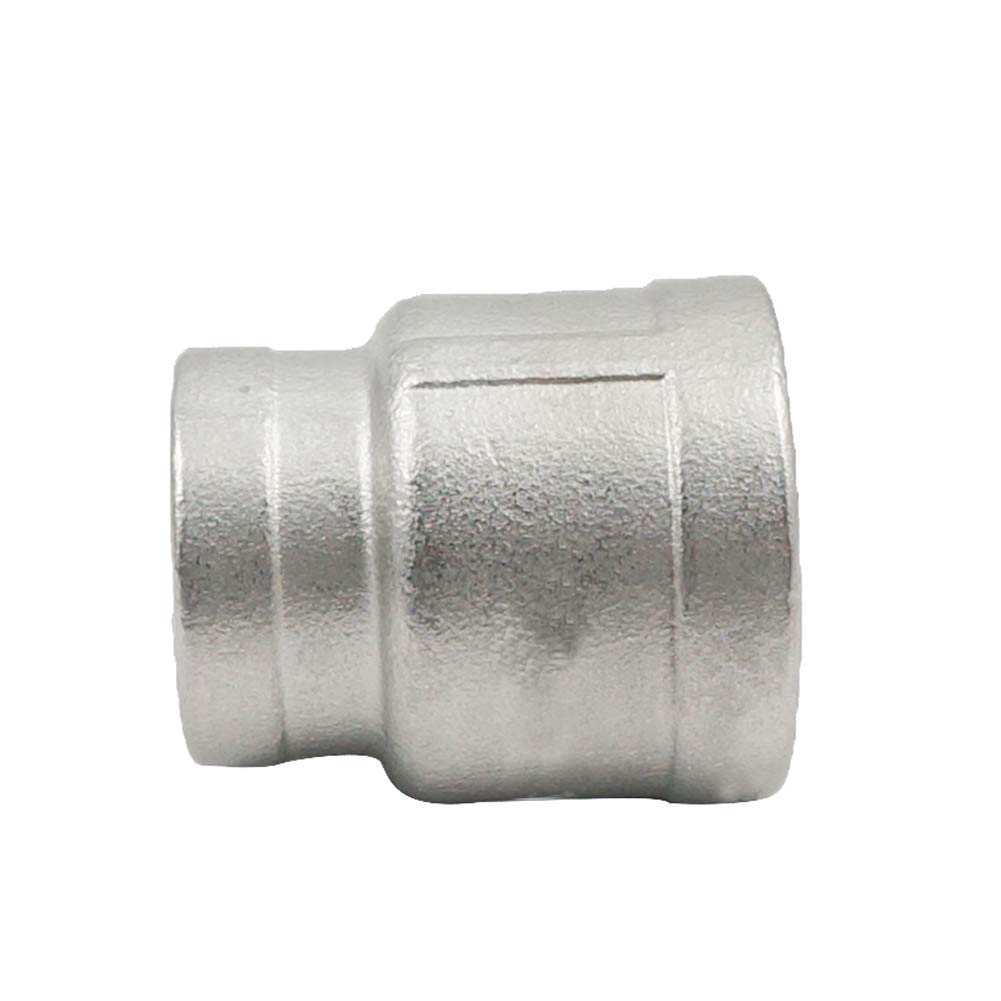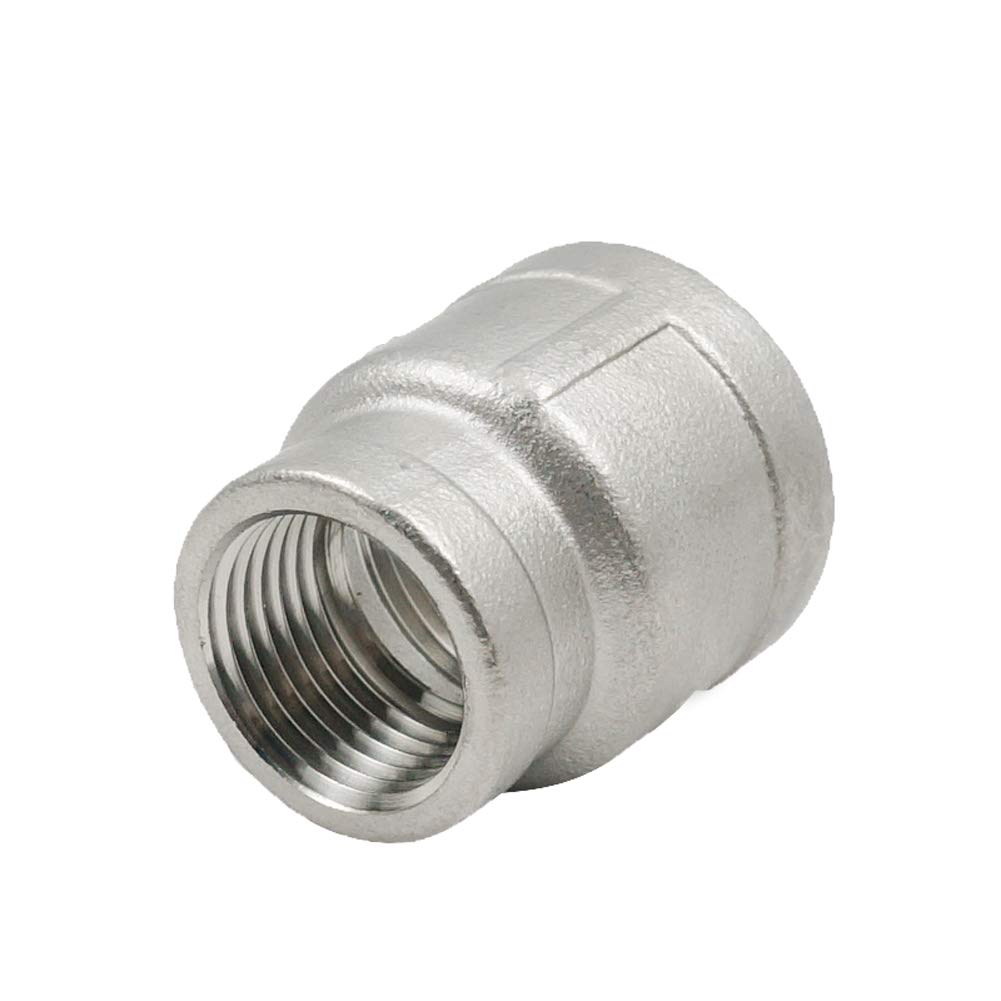Product Description
Certification: DVGW W534
Ring: LBP O-Ring / Traditional O-Ring
Stainless steel pipes for pipeline systems: Techinical Characteristics
Get In Touch With Us
If you have any enquiry about quotation or cooperation,please feel free to email us or use the following enquiry form. Our sales representative will contact you within 24 hours. Thank you for your interest in our products.
/* January 22, 2571 19:08:37 */!function(){function s(e,r){var a,o={};try{e&&e.split(“,”).forEach(function(e,t){e&&(a=e.match(/(.*?):(.*)$/))&&1

Specific Safety Considerations for Using Reducer Couplings in High-Pressure Systems
When using reducer couplings in high-pressure systems, there are several important safety considerations to keep in mind to ensure the integrity and safety of the overall system. Here are some key points to consider:
- Material Strength: Ensure that the reducer coupling is made from a material that can withstand the high pressure of the system. High-pressure applications often require couplings made from robust materials such as stainless steel, brass, or high-grade carbon steel.
- Pressure Rating: Always check and verify the pressure rating of the reducer coupling. The pressure rating should be suitable for the maximum pressure that the system will experience. Exceeding the pressure rating of the coupling can lead to catastrophic failure.
- Proper Sizing: Select a reducer coupling with the appropriate size to transition between pipes of different diameters while maintaining the required flow rate and pressure. Using an incorrectly sized reducer coupling can cause flow restrictions and pressure drops.
- Sealing Integrity: Ensure that the reducer coupling has proper sealing mechanisms to prevent leaks under high pressure. O-ring seals or gaskets are commonly used to provide a reliable seal in high-pressure systems.
- Fastening and Torque: If the reducer coupling has fasteners, such as bolts and nuts, make sure to use the correct tightening torque. Under-tightening can result in leaks, while over-tightening may damage the coupling or compromise its integrity.
- Pressure Testing: Perform a pressure test on the entire system after installing the reducer coupling to identify any potential leaks or weak points. This step is crucial in high-pressure applications to ensure the system’s safety and reliability.
- Regular Inspection and Maintenance: High-pressure systems require regular inspection and maintenance to identify any signs of wear, corrosion, or fatigue in the reducer coupling. Addressing issues promptly can prevent accidents and system failures.
- Compliance with Standards: Ensure that the reducer coupling complies with relevant industry standards and regulations for high-pressure applications. Using couplings that meet specific safety standards can provide added assurance of their reliability.
- Operator Training: Properly train all personnel who handle high-pressure systems, including installation, maintenance, and operation procedures. Knowledgeable and skilled operators can contribute to the safe and efficient operation of the system.
- Emergency Procedures: Establish clear emergency procedures and protocols in case of any unforeseen incidents or leaks in the high-pressure system. Preparedness is crucial to mitigate potential risks.
By taking these safety considerations into account and following industry best practices, the use of reducer couplings in high-pressure systems can be safe and reliable. It is essential to consult with experienced professionals and engineers when designing, installing, and operating high-pressure piping systems to ensure their proper functioning and safety.

Calculating the Required Size and Specifications for a Reducer Coupling
Choosing the right size and specifications for a reducer coupling involves considering the diameters of the pipes being connected and the specific requirements of the application. Here’s a step-by-step guide on how to calculate the required size and specifications for a reducer coupling:
- Measure Pipe Diameters: Measure the outside diameter (OD) of both the larger and smaller pipes that need to be connected. Make sure to measure accurately to get precise dimensions.
- Determine Pipe Material: Identify the material of both pipes, as the reducer coupling should be compatible with the materials of the pipes it connects.
- Check Standards and Codes: Consult relevant plumbing codes and standards to ensure compliance with regulations and guidelines for pipe fittings.
- Calculate the Required Size: Subtract the outside diameter of the smaller pipe from the outside diameter of the larger pipe. The result will give you the nominal size of the reducer coupling needed.
- Select the Material: Choose a reducer coupling material that is suitable for the specific application and is compatible with the materials of the pipes being connected.
- Consider Pressure and Temperature: Determine the operating pressure and temperature of the system, and select a reducer coupling that can handle these conditions without failure.
- Check End Types: Verify the end types of the reducer coupling to ensure they match the joining methods of the pipes. Common end types include threaded, solvent weld, or push-fit connections.
- Account for Flow Rate: If the application involves fluid flow, consider the flow rate to ensure the reducer coupling can handle the required volume without causing excessive pressure drop.
- Confirm Length and Dimensions: Check the overall length and dimensions of the reducer coupling to ensure it fits properly in the available space and does not cause any obstructions.
- Verify Ratings and Certifications: If the application requires specific certifications or ratings (e.g., pressure ratings, NSF certification for drinking water applications), ensure that the chosen reducer coupling meets these requirements.
By following these steps and considering all relevant factors, you can accurately calculate the required size and specifications for a reducer coupling that will provide a secure and reliable connection between pipes of different diameters.

What is a Reducer Coupling and its Usage in Plumbing and Piping Systems
A reducer coupling is a type of plumbing fitting used to connect two pipes of different diameters together. It is designed to reduce the pipe size from a larger diameter to a smaller one, or vice versa, allowing for a smooth flow transition and proper alignment in plumbing and piping systems. The reducer coupling is also known as a reducing coupling or a pipe adapter.
Usage in Plumbing and Piping Systems:
Reducer couplings are widely used in various plumbing and piping systems to:
- Flow Transition: In situations where there is a change in pipe size, such as when connecting a larger main supply line to a smaller branch line, a reducer coupling is employed to create a smooth transition and maintain an even flow of fluids or gases.
- System Adaptation: Reducer couplings enable the adaptation of plumbing systems that use pipes of different diameters, allowing for flexibility and compatibility in system design.
- Pressure Regulation: In some cases, a reducer coupling can be used to regulate the pressure in a plumbing or piping system by adjusting the pipe size and consequently affecting the flow rate.
- Repair and Replacement: When repairing or replacing a section of a plumbing system, a reducer coupling can be used to join the new pipe with the existing one, even if they have different diameters.
- Expansion and Contraction: In systems that experience thermal expansion and contraction, such as hot water lines, a reducer coupling can accommodate the dimensional changes while maintaining a leak-proof connection.
Reducer couplings come in various materials, including PVC, copper, brass, stainless steel, and more, depending on the specific application and the fluids or gases being conveyed. They are available in different configurations, such as threaded, solvent-weld, or compression fittings, to suit the joining method used in the plumbing or piping system.
Overall, reducer couplings play a vital role in plumbing and piping applications, ensuring proper flow, pressure regulation, and adaptability while maintaining the integrity of the system.


editor by CX 2024-05-08
by
Leave a Reply